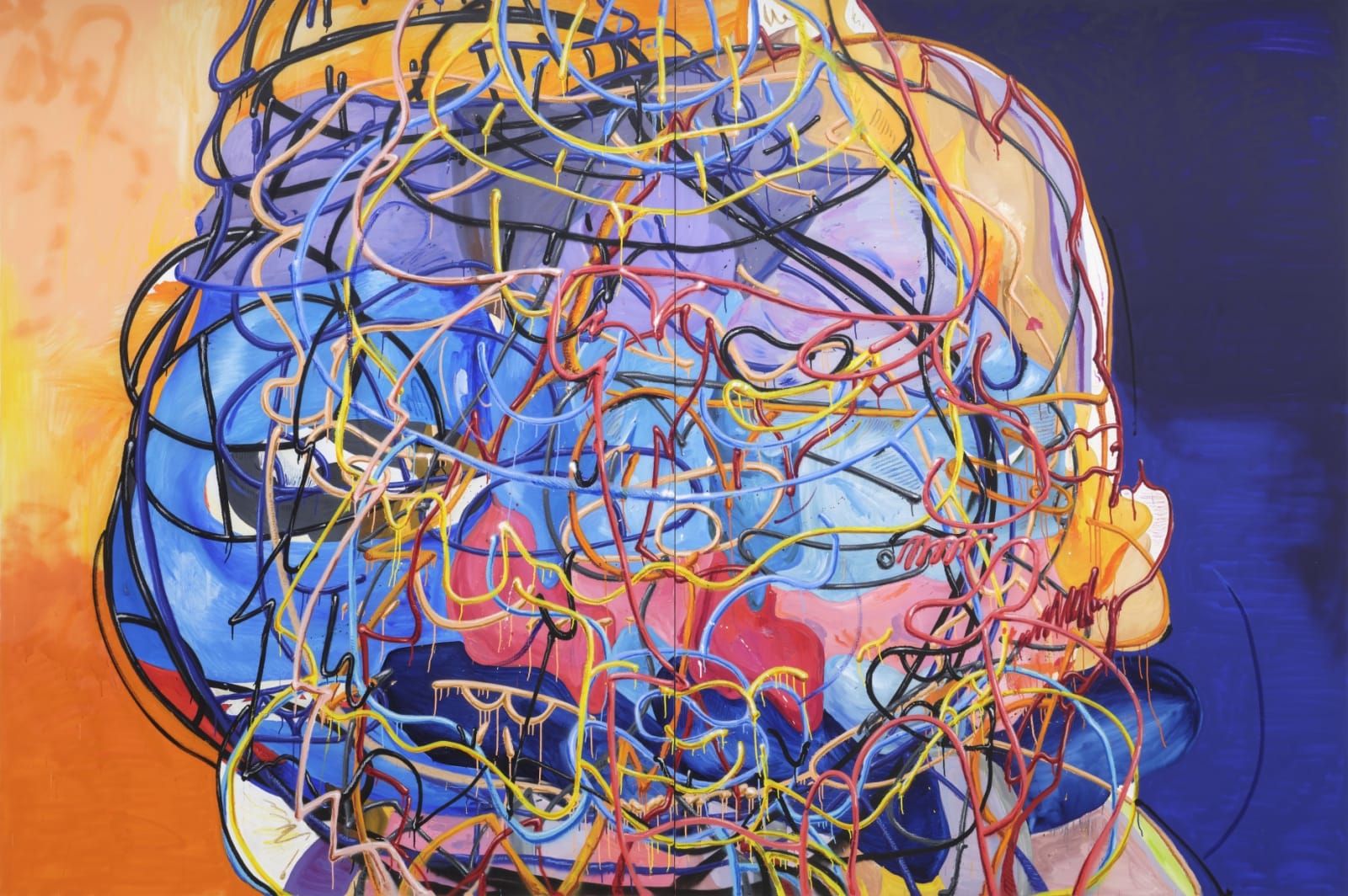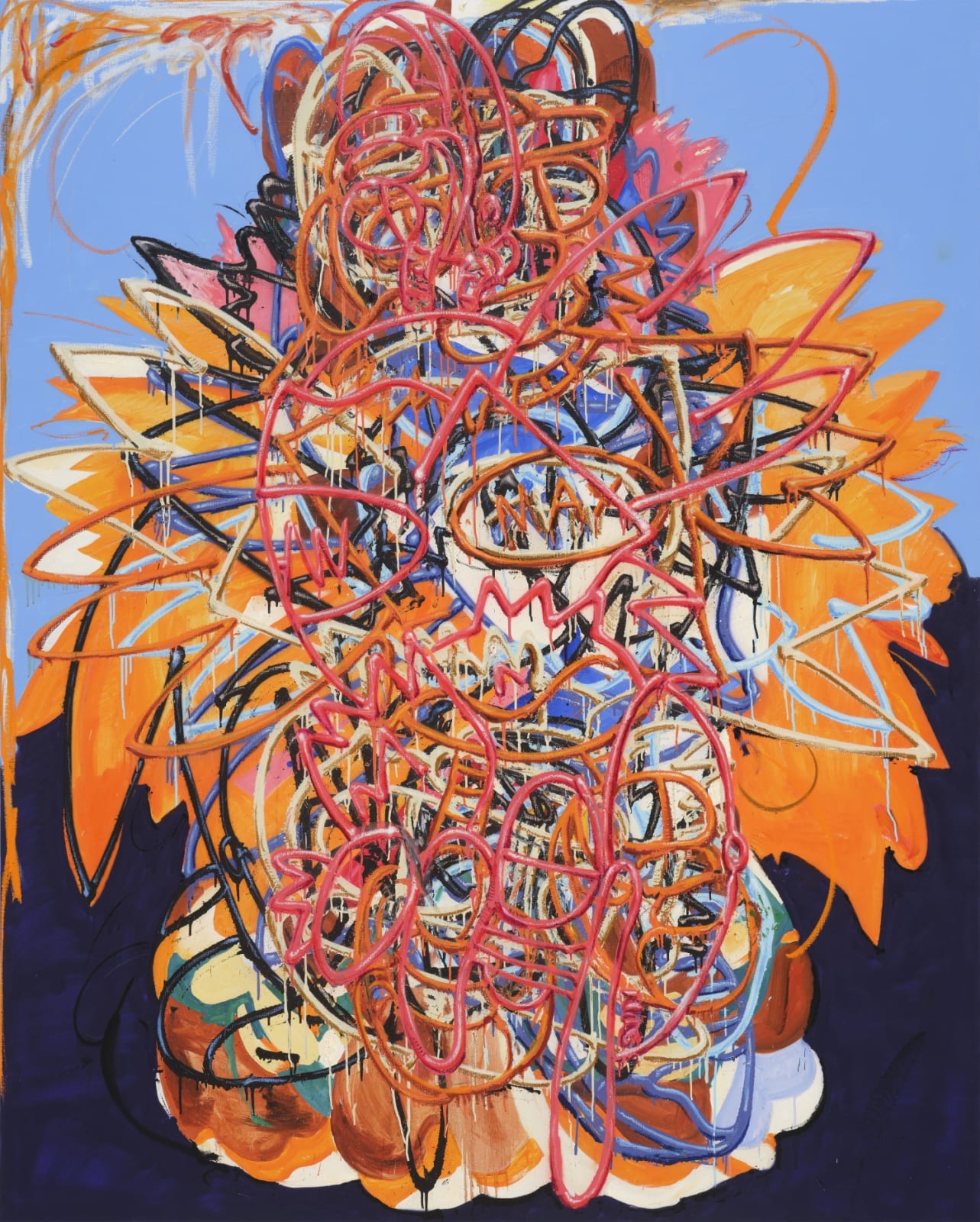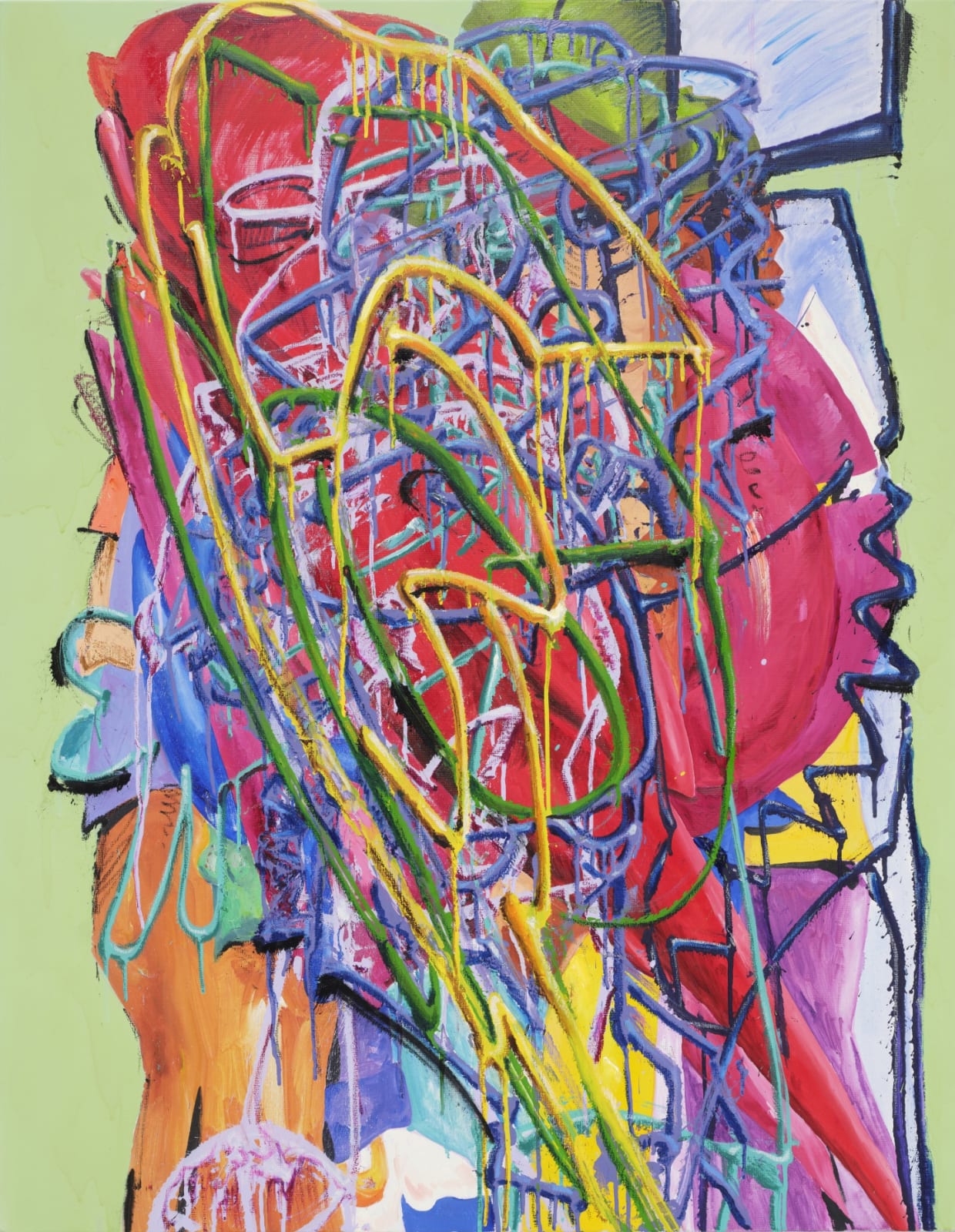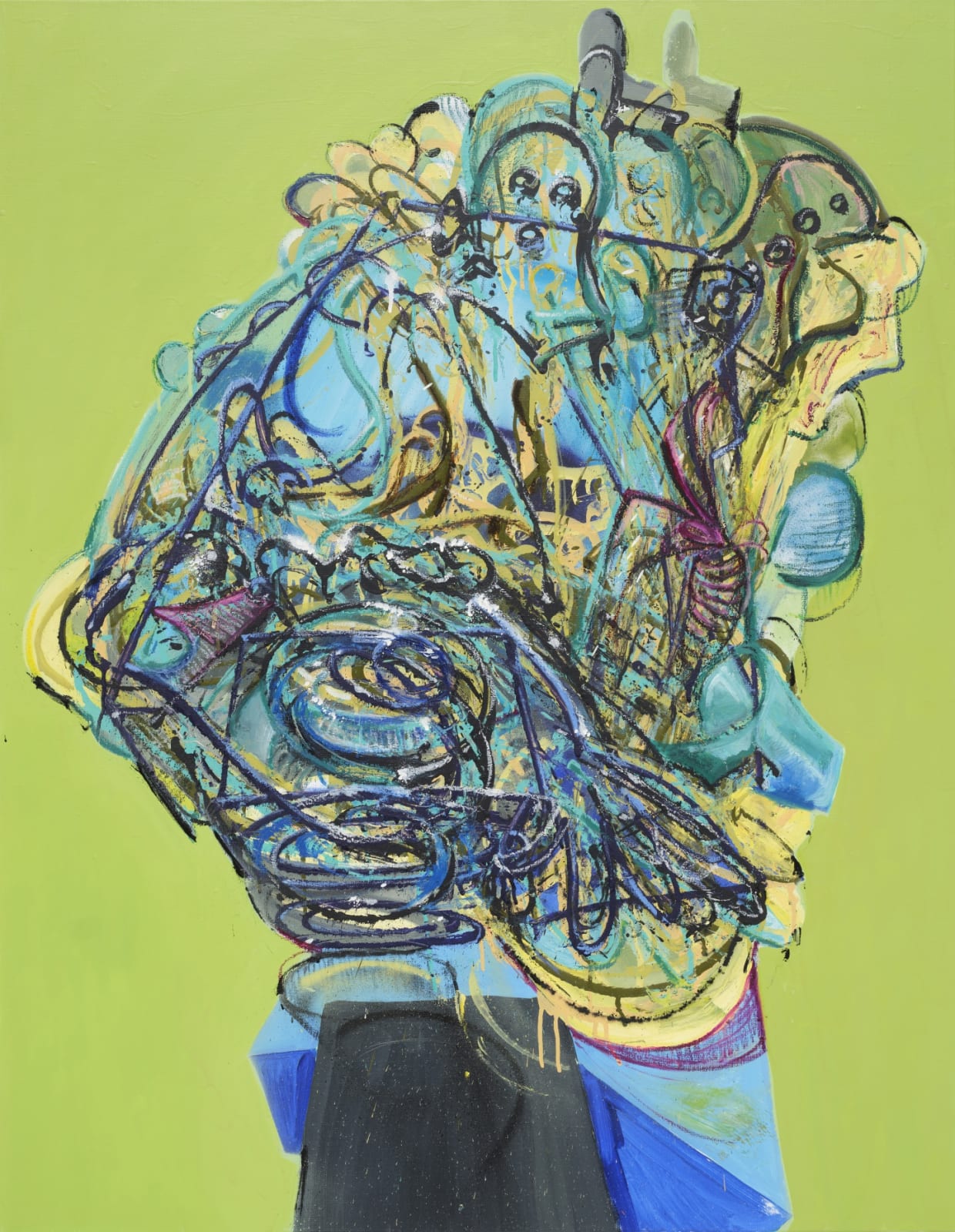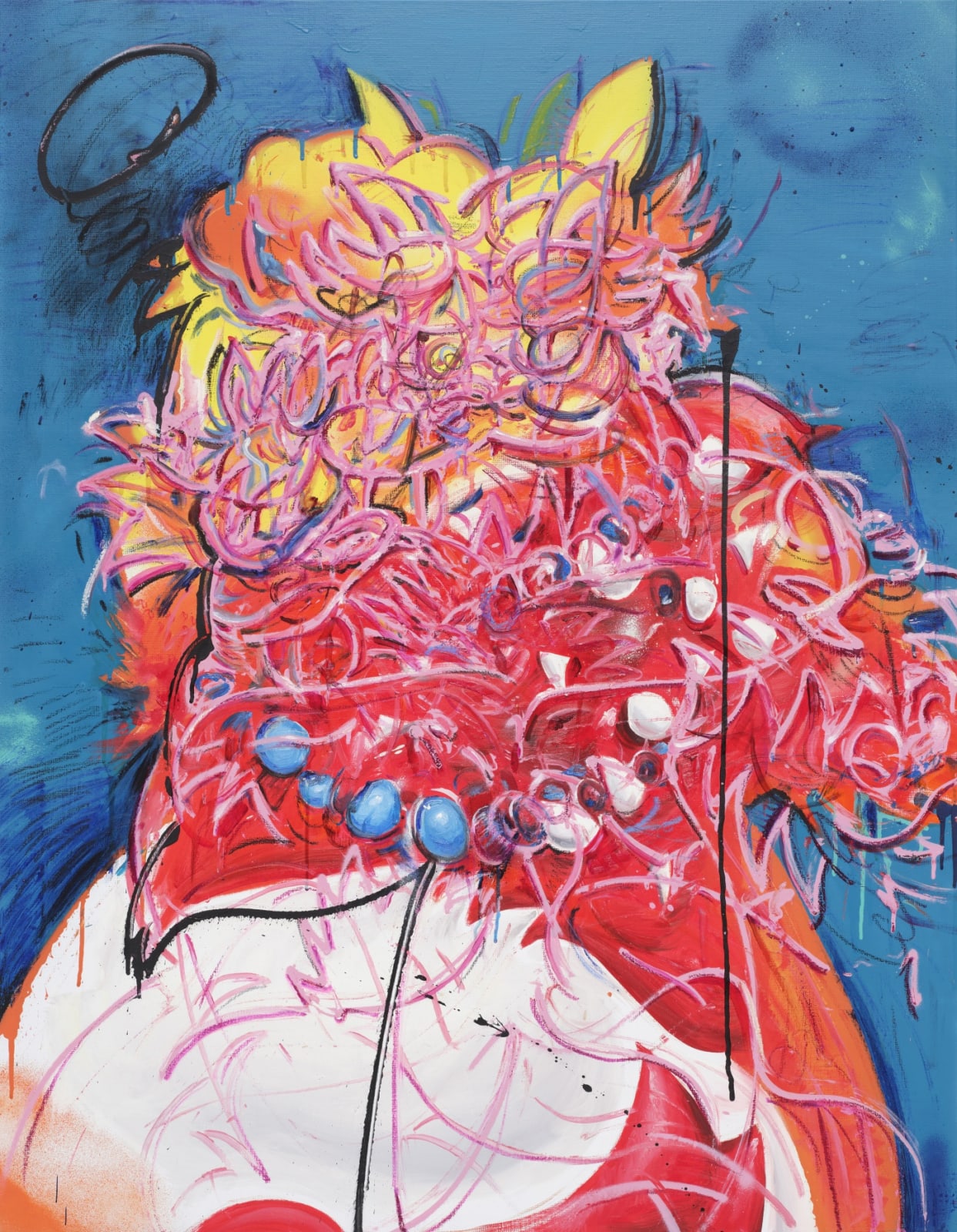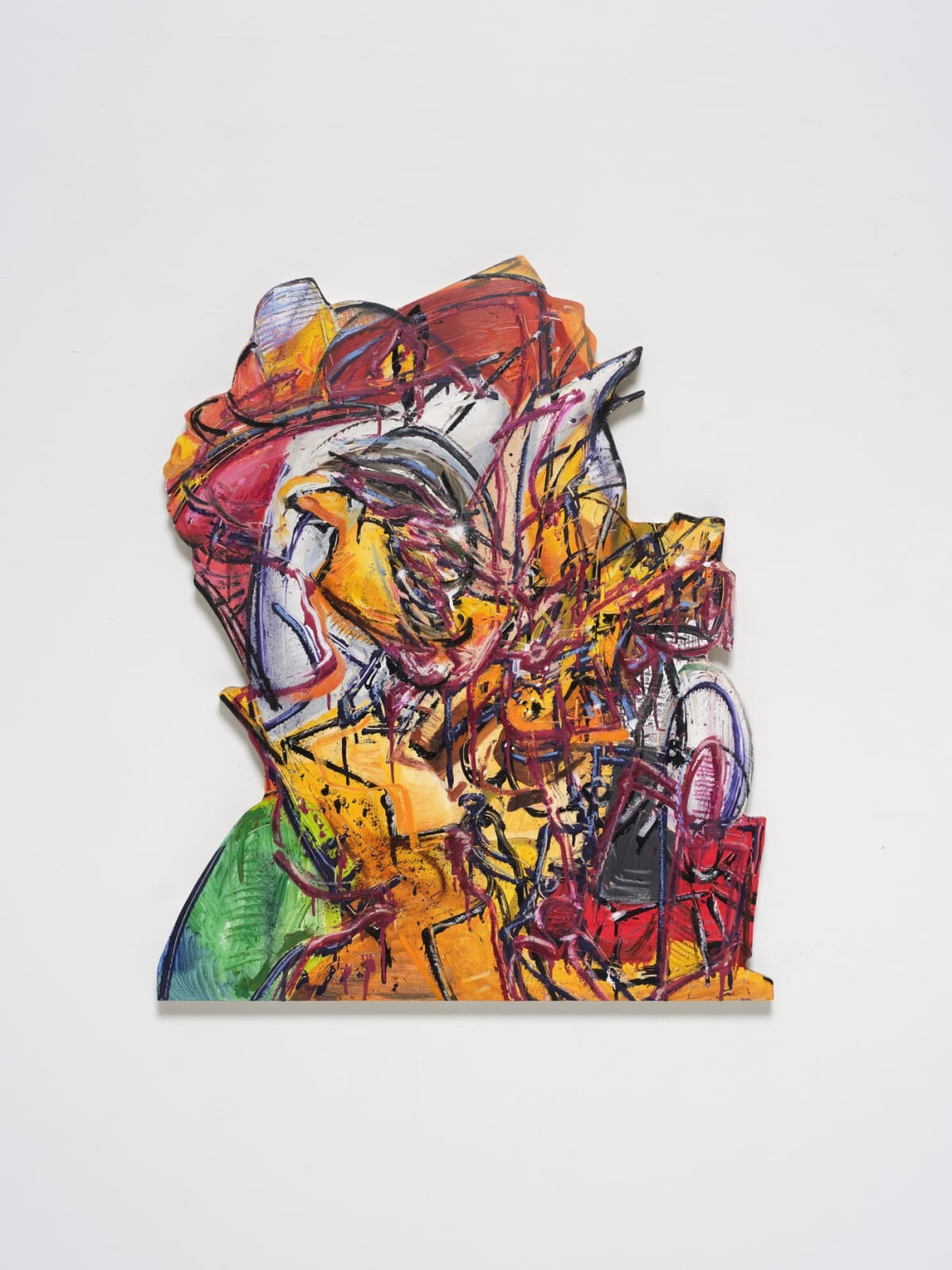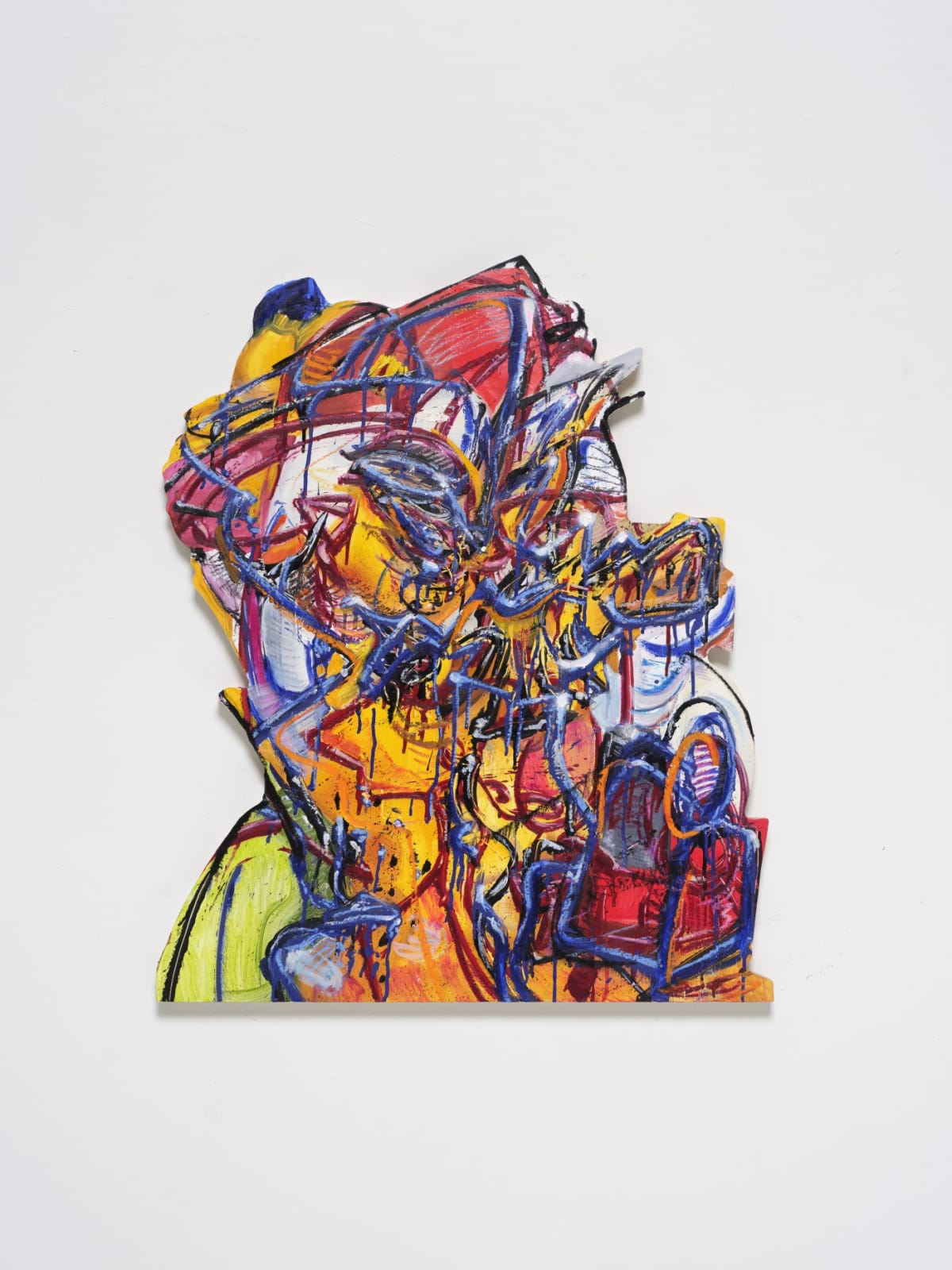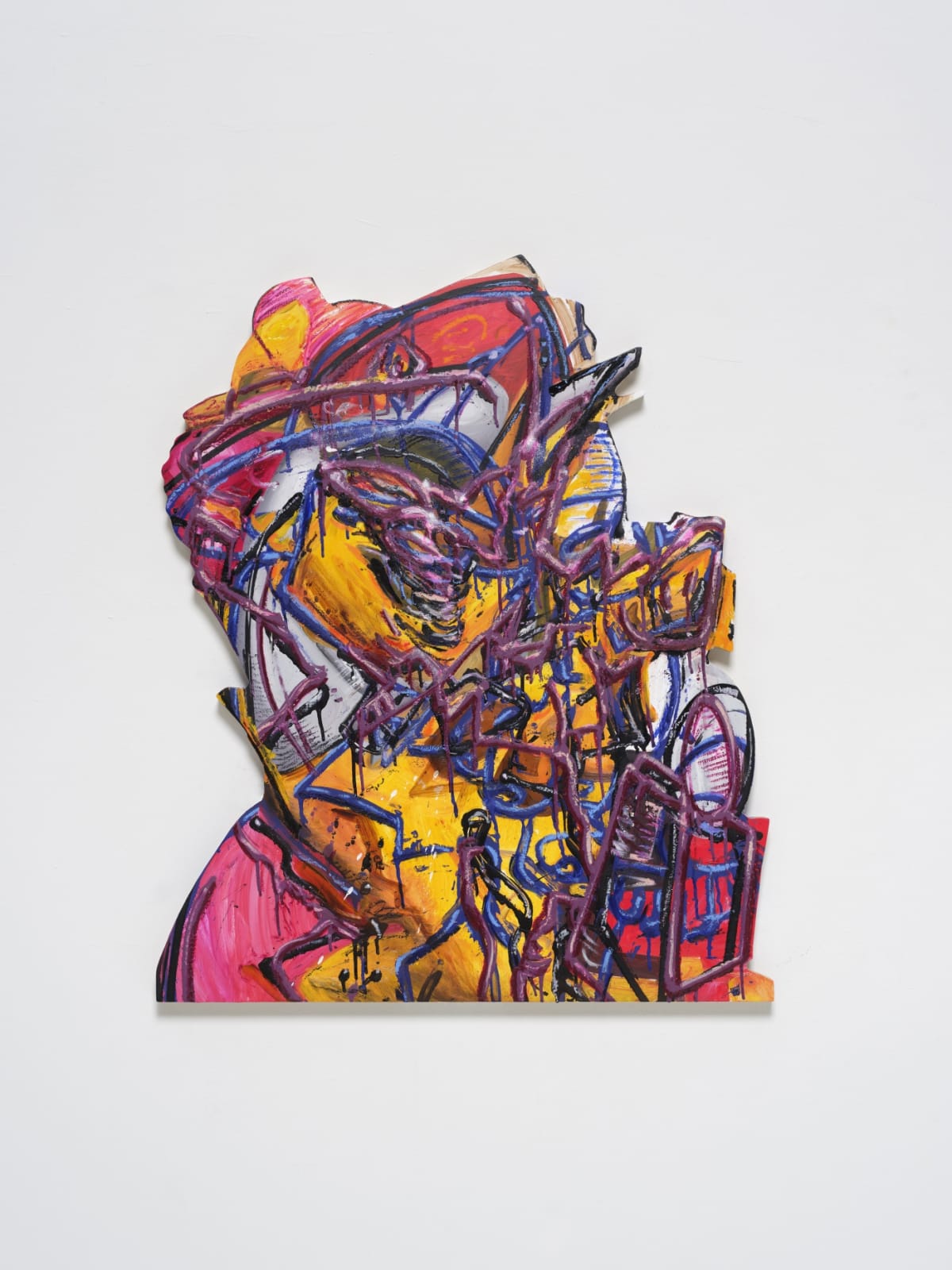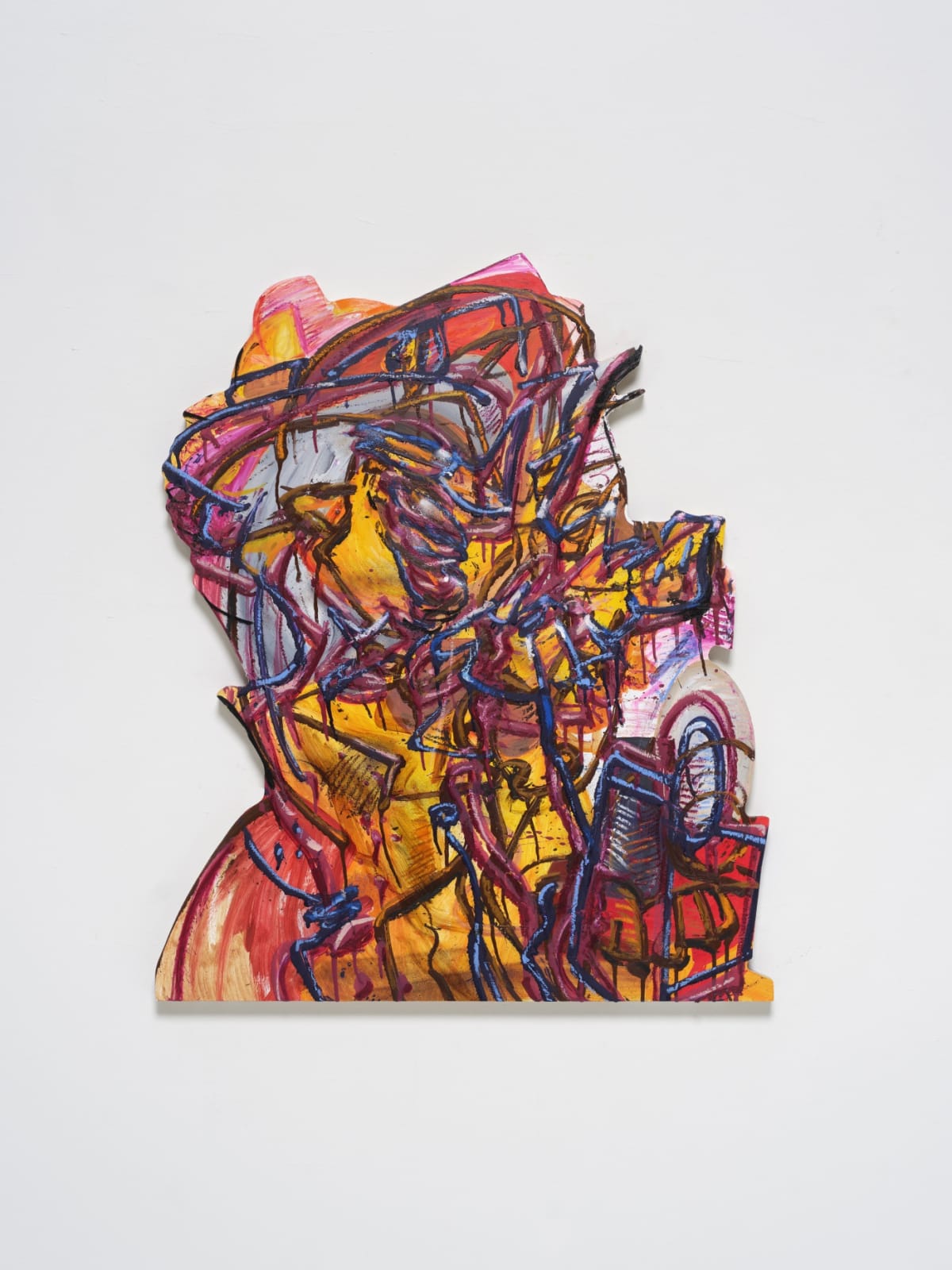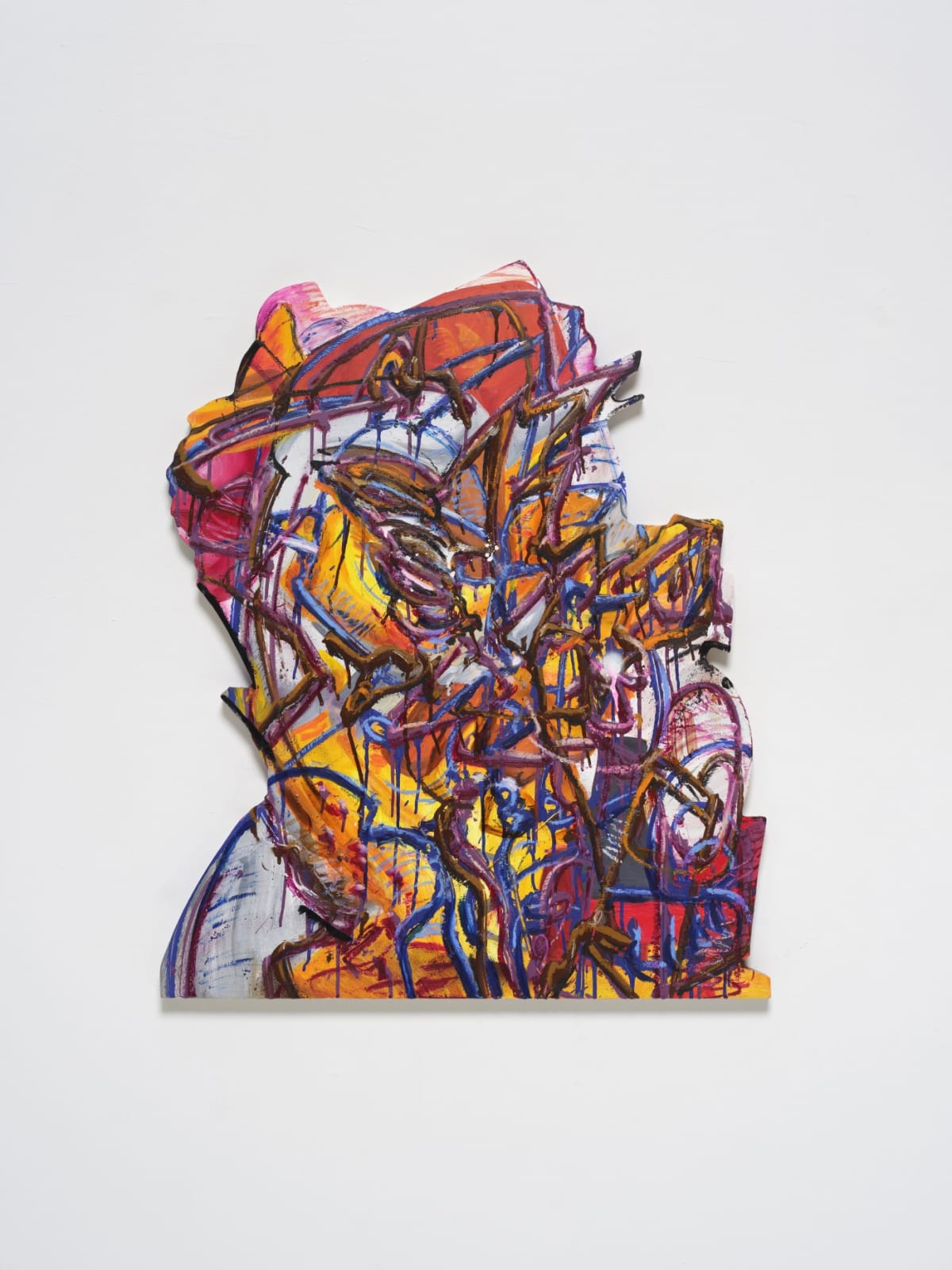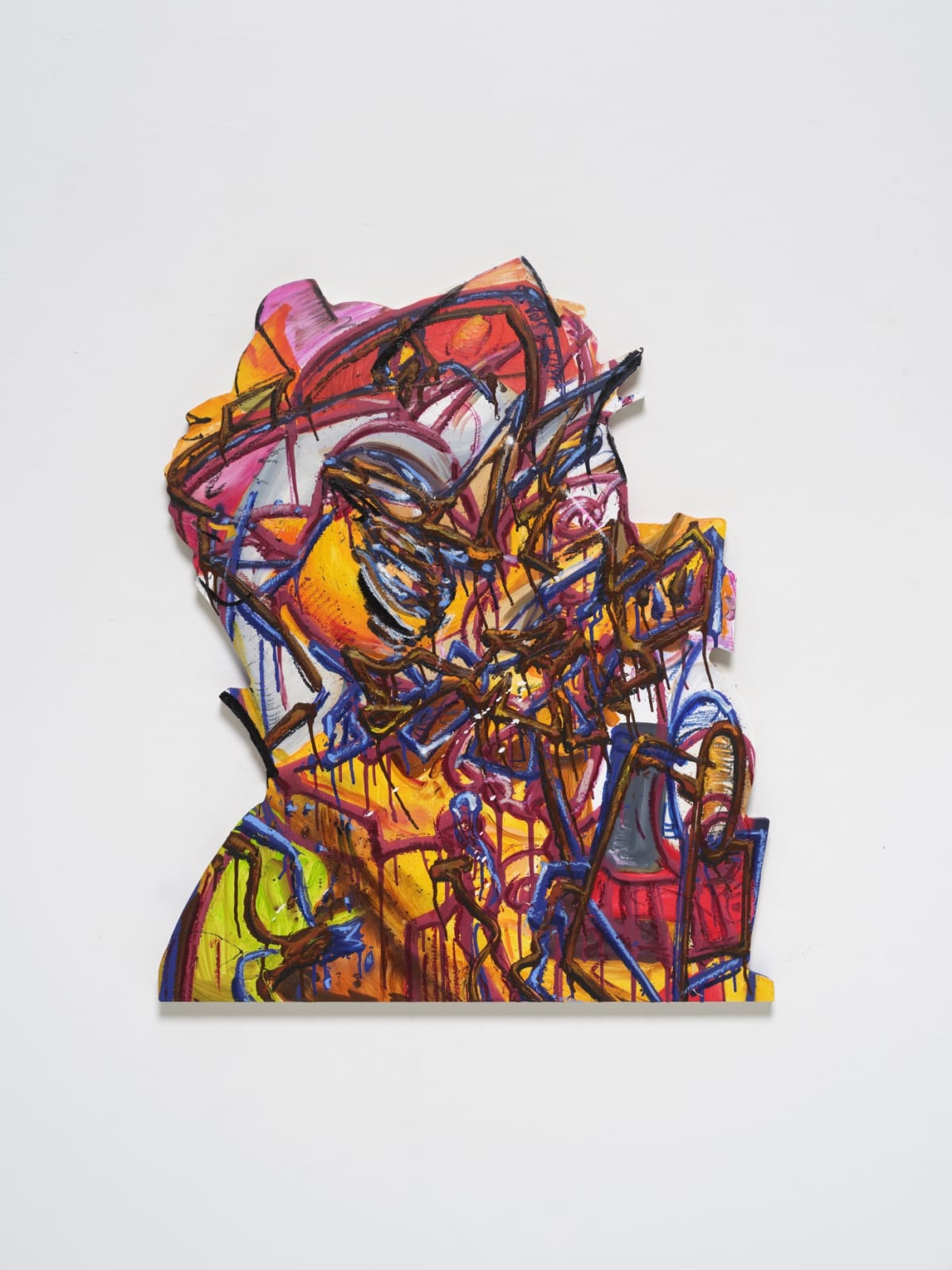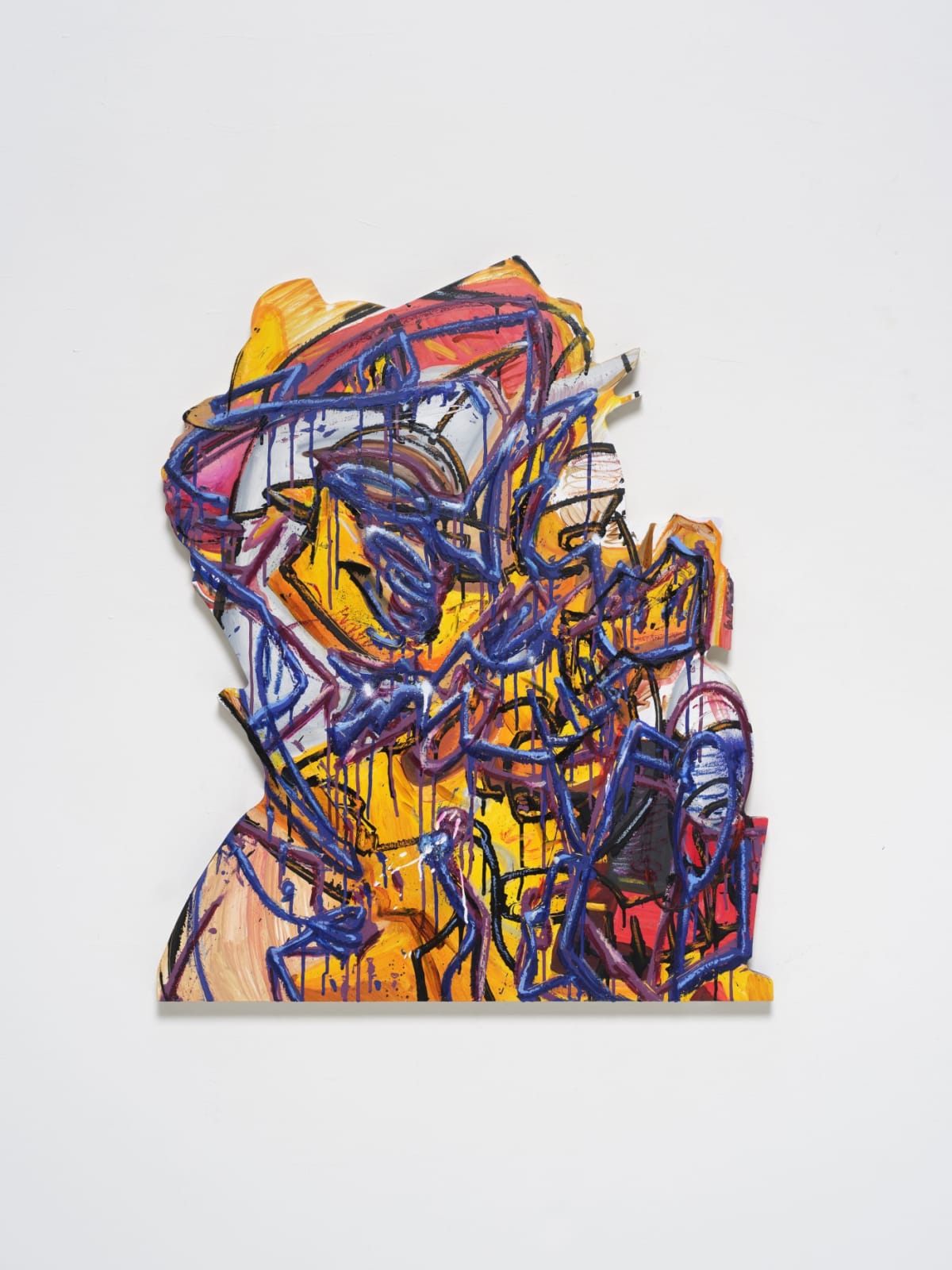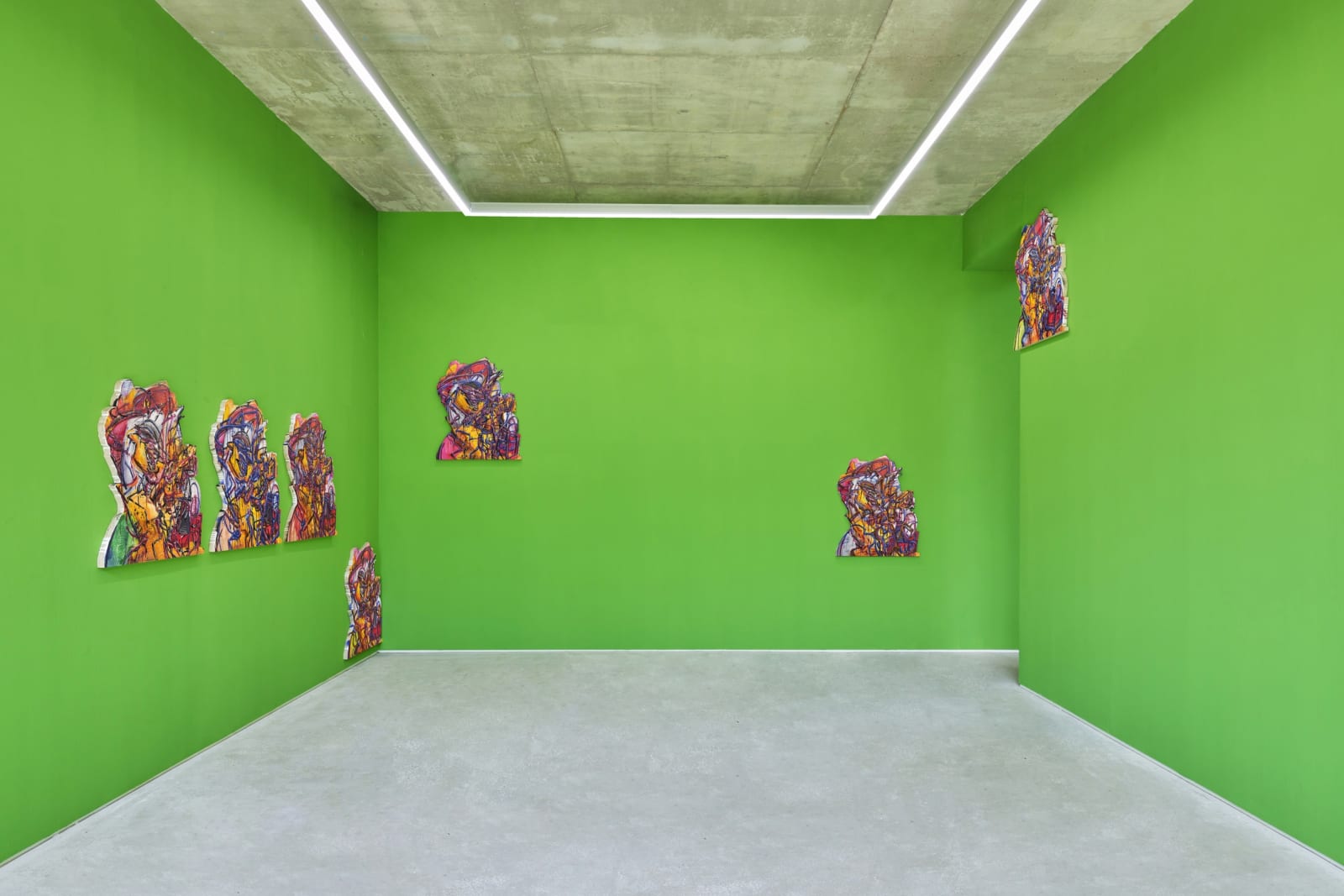Cloud Stepper: 이해강 Haekang Lee
개인화된 저장소는 저장된 것과 저장되지 않은 것을 가른다. 보관할 물건을 담는 물리적인 상자 따위도 그렇지만 디지털 기반으로 파일을 저장하는(save) 무형의 클라우드(cloud)도 마찬가지다. 저장되지 않은 것은 저장하는 이 자신이 수립한 틀 밖으로 탈락시킨 이야기다. 이는 타인의 것일 수도 있으나, 자신의 여러 이야기 중 하나 이외의 것일 수도 있다. 중요한 건 저장‘소’라는 틀은 저장된 것끼리의 맥락을 구성한다는 점이다. 그리고 그 저장소에는 저장한 이가 선택해 꾸민 단일의 서사가 깃든다.
《Cloud Stepper》는 이해강의 한 저장소에서 꺼낸 이야기다. 그곳에는 이해강이 애니메이터로서 클라이언트의 의뢰를 받아 만든 캐릭터들이 있었다. 그가 만든 캐릭터는 정체가 불분명한 동시에 분명했다. 이들은 나이키와 같은 의류 브랜드나 브로콜리너마저, 실리카겔 등의 음악가들, 〈쿵〉(모아, 2021) 등의 음악을 위해 제작되었다. 그래서 의뢰의 성격에 맞춘 형상과 동세를 가졌지만, 어떤 것은 이름조차 없었다. 주로 브랜드나 음악가명, 프로젝트 내용을 참고해 부르기 쉬운 별칭이 이름을 대신했다. 그런데 사실, 캐릭터를 만드는 일 자체가 이름을 짓는 일과 가까워지는 과정이다. 그가 만든 모든 캐릭터는 윤곽, 색, 모양 등 시각적인 형태부터 성격, 나이, 취향 등 어렴풋한 내면의 구성까지 안팎의 요소를 새롭게 정립한다. 정확한 이름이 없을지언정 이름을 둘러싼 정체성 만들기의 과정이 창작자의 주관과 선택에 따라 일어나는 것이다. 그렇게 의뢰에 맞춘 형태와 가벼운 별칭으로 조합된 캐릭터들은 이해강이 새로 만든 공간(cloud)에 정지된 이미지나 움직이는 영상의 형식으로 저장되어 있었다.
이해강은 저장소 속 캐릭터들을 꺼내어 캔버스에 그린다. 디지털 환경이 이제 물질의 풍경처럼 일반적인 세계의 바탕이 된 일을 떠올리면, 이 그림들도 어쩌면 인물화다. 캐릭터는 세로형 캔버스에 하나씩 그려져 있다. 이들은 그 속에서 흉상에 가까운 크롭(crop)과 반측면에 다가가는 미묘한 각도를 얻었다. 마치 실제 인물의 얼굴을 그릴 때처럼 세밀하고 복잡하게 묘사된 형상은 그 뒤에 밋밋하게 밀린 배경과 대비를 이룬다. 이름이 부재했던 캐릭터들은 ‘세이카겔’, ‘브로콜리블루캣’ 등 그림에서 두 캐릭터를 융합한 것을 지칭해 섞은 이름, ‘불눈물’, ‘숫 원앙’, ‘암 원앙’ 등 의뢰의 주제나 클라이언트가 정한 캐릭터의 역할에서 딴 이름을 부여받았다. 디지털 환경이라는 특정한 세계에 진입해야만 열 수 있었던 그의 캐릭터들은 캔버스의 틀과 바탕, 채색 재료의 조합을 통해 두께가 있는 표면을 획득함으로써 회화의 세계로 돌입한다. 또한 유화, 스프레이, 오일스틱 세 가지 재료는 섞이거나 구분되며 비물질의 캐릭터에게 물성을 쥐여 준다. 주문자의 의뢰를 받아 얼굴을 재현해 그려 주었던 과거 인물화가들의 규칙처럼, 캐릭터들은 재현과 기록에 근거한 형식으로 그림이 된 것이다.
전시장 한편에는 11개의 ‘콰지모둠’이 자리한다. 콰지모둠은 2021년 이해강이 여러 뮤지션의 초상을 애니메이션으로 다룬 프로젝트에서 콰지모토(Quasimoto)와 엠에프 둠(MF Doom)을 그린 캐릭터를 이은 그림이다. 동일한 동세, 각도, 표정을 지닌 콰지모둠이 1개의 캔버스, 10개의 나무 패널에 나누어 그려져 있다. 얼굴 그리기에 쓰인 재료의 종류, 색채의 범위, 선과 면의 구획 등 화면을 구성하는 대부분의 요소가 유사하다. 그러나 그 안을 들여다보면 미세하게 다른 세부들, 예를 들어 선이 그어진 위치나 상체의 주조색, 동일한 색에서의 명채도, 명암의 위치와 면적 등의 차이가 드러난다. 하나의 대상을 일정한 규격과 크기의 바탕에 반복해 그리는 작업은 시작점인 원형, 그리고 앞선 변형에서 누락되거나 더해지는 변별점을 발현시킨다. 특히 그 작업이 물리적인 손으로 이루어진다는 점은 이러한 차이의 현현을 가중하는 장치가 된다. 그의 애니메이션 속 캐릭터는 자신의 움직임을 프레임별로 나누어 구성했을 테다. 당시에 낱장의 프레임이 이어져 한 종의 캐릭터를 만들고 한 개의 파일(file)을 생성했다면, 지금 이곳에 놓인 콰지모둠은 11점의 그림, 11종의 인물화로 스스로를 분화한다. 그것은 이전처럼 연속적인 시퀀스가 아니라, 부동의 자세 안에서의 구분을 이루고 있다. 이와 같이 그가 자신의 캐릭터를 회화로 구현하는 일은 프레임과 시퀀스를을 활용하는 애니메이션 기법을 참조하는 동시에, 납작한 세계 속 가상의 존재를 회화 재료를 통해 실체로서 재현한다는 회화적 실천을 동반한다.
한편 캔버스에 그려진 콰지모둠이나 다른 캐릭터와 달리 나무 패널에 그려진 콰지모둠은 윤곽과 면만 가진 대상 자체가 되어 남아 있다. 그의 작업에서 배경의 부재는 새로운 공간을 상상할 여지를 열어 준다. 이곳의 캐릭터들에게 공간이란 최초에는 이해강이 컴퓨터 이미지나 애니메이션을 다루었던 세계가 지닌 평평한 단면에 한정되었을 것이다. 그러나 이들이 회화가 되어 물질의 세계에 돌입한 시점부터 그 공간은 깊이와 넓이를 가진 장소로 변모한다. 그의 저장소에 깃들였던 서사는 이제, 보는 이가 세울 서사의 시작으로 제시된다.
Personal storage systems distinguish between what is saved and what is not. This applies to both physical boxes and intangible digital clouds. What is not stored is excluded from the framework established by the one doing the storing; it no longer matters or is of concern. This exclusion could be something of the other, but it may just as well be one of many stories that the self decides to exclude. The important thing is that the framework, or the placeness of the storage, creates context among what is stored. And within that storage lies a single narrative chosen and elaborated by the one who stores it.
Cloud Stepper is a story from one of Lee Haekang’s storage spaces. An animator, Lee has created characters for numerous commissions and kept them saved in storage. These characters, which he created for clothing brands like Nike, musicians such as Broccoli, You Too?, Silica Gel, and projects like “KUUUNG” (moi, 2021), were simultaneously distinct in feel but ambiguous in their identity. The characters took forms, actions, and postures tailored to each commission, but some remained nameless. Many were expediently referred to using brand names, band names, or sometimes the project name.
Yet, in a way, the process of character creation eventually approaches a sense of knowing akin to naming. Each characterization by Lee establishes external elements like outlines, colors, and shapes, as well as traits—however vague—like personality, age, and interests. The characters may not have been christened with a name per se, but the creator has indeed given the characters their very identity. These characters of commissioned forms and light working nicknames were saved and stored as images and videos in Lee’s storage space in the cloud.
Lee Haekang has been taking those characters out of storage to paint on canvas. Now that the digital ecosystem is no longer a separate domain but an overlapping and augmented sublayer of our reality, these paintings may be considered character portraits. A vertical canvas of individual characters, framed approximately to the bust, with a subtle half-profile angle. The characters have been painted with actual portrait-like complexity and meticulous attention to detail, creating a contrast against the less-formed background.
Previously unnamed characters have been given names by several different conventions: Compounded names or portmanteaus like Saycagel and BroccoliBlueCat in reference to the fused characters, and client-requested themes and roles like Fire-tears , Won-ang Male , and Won-ang Female . Existing previously only as digital signals on two-dimensional planes, the characters have now entered the world with physical presence and depth through the canvas frame.
The physicality of the three substrates—oil paint, spray paint, and oil stick—fuse and separate to form the character’s distinct materialness. Much like traditional portrait painters who were commissioned for portraits, Lee has represented and documented these characters into material being.
Eleven paintings of Quasimodoom are in the exhibition space. For a 2021 project, Lee Haekang fused hip-hop personalities and characters. Quasimoto of Madlib and Lord Quas and the late British-American rapper and record producer MF Doom of Madvillainy was one of several animated portraits he created. In this exhibition, Quasimodoom maintains the same pose, angle, and expression across eleven works—one on canvas and ten on wooden panels. Most compositional elements, such as the materials used for the paint, the palette, and the distinction between planes and lines, are all very similar at first glance.
Subtle differences in those planes and lines, the palette for the upper body, the brightness and saturation within the same color, the positioning and breadth of lights and darks are revealed to a more careful gaze. Iterated painting of the same object on a surface of the same material and dimension generates a sense of archetypal originality as well as points of divergence, and the physical hand-paintedness of this work amplifies these differences.
While the original creations would have been composed of countless frames for animation saved as a singular file, the Quasimodoom s on exhibition are eleven separate character paintings. They are in same-but-separate stationary poses, distinct as they have broken sequence. Lee’s representation of his characters as character paintings references animation techniques while embracing painterly practices, reproducing flat, virtual beings of material substrate.
Unlike Quasimodoom on canvas or any other characters on canvas, the Quasimodoom on wooden panels feature only planes and outlines. The absence of a discernible background in his work leaves fecund potential for new imaginary spaces. For Lee Haekang’s characters in this exhibition, “space” was initially limited to the flat digital world of images and animations. Now that they have become paintings and entered the material world, they are in a place with dimensions of depth and breadth. Narratives from the cloud are now here, saved for rumination and augmentation.
